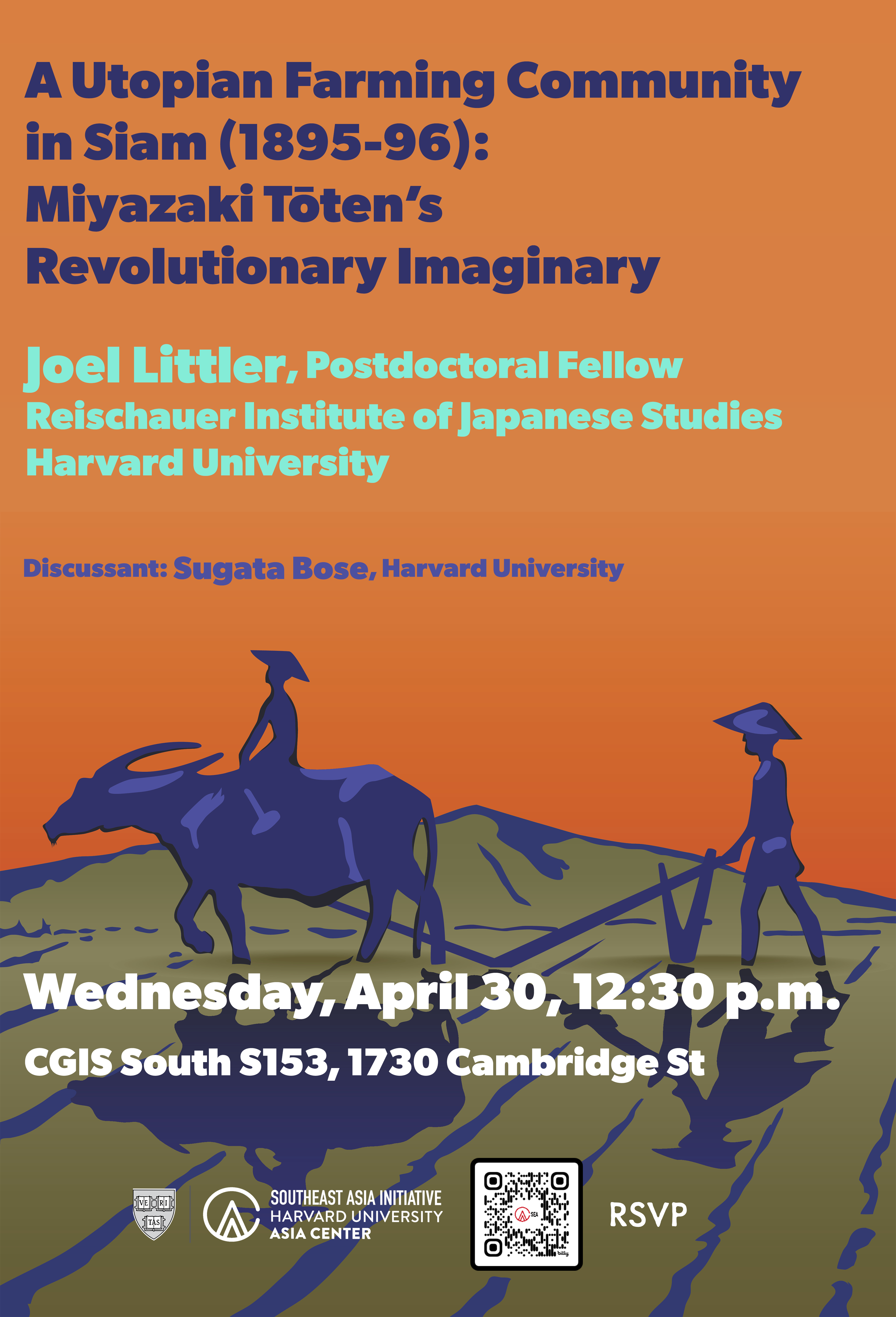A Utopian Farming Community in Siam (1895-96): Miyazaki Toten's Revolutionary Imagery
Siam (Thailand) and Japan are two of the Asian countries that avoided colonization during the height of Western imperial expansion. People in both countries sensed something special about that fact, but when Japan and Siam began diplomatic relations in 1897, the Japanese forced an unequal treaty on the Siamese just like the ones Japan had been subjected to by Western powers. However, two years before this, a young revolutionary called Miyazaki Tōten (1871-1922) led a group of Japanese former peasants and samurai to Siam to attempt to build a utopian farming community (risōkyō). This presents a nonstate opening between the two countries, enacted by people from Kyushu in southwestern Japan who were not diplomats nor were acting in Japan’s national interest. Miyazaki and his comrades understood Japan’s relations with Asian countries on more equal terms and sought cooperation rather than competition between countries. Like the Japanese who left Japan at the start of the Tokugawa Period and established a community in Ayuthaya, Miyazaki saw Siam as a place of possibility, free from both colonial authorities and the Japanese state. Miyazaki was already involved in the Chinese revolution, but when he returned from Siam he met Sun Yat-sen and became one of his closest Japanese comrades. This paper shows how Miyazaki used Siam to imagine and practice future ways of living that centred on transnational cooperation and revolution.
Registration Appreciated. For further details, please click here.
South East Asian Initiative talk, Harvard Asia Center
